The balance beam is 3.9 inches wide and the average width of a woman’s foot is somewhere around 3.5 inches. That means there are .2 inches, or half a centimeter, on either side of a gymnast’s foot when she stands on the beam. That doesn’t leave a lot of room for error.
So, it’s very important for a gymnast to remain “square” while performing acrobatic elements on the balance beam since it’s impossible to take any sort of step to the left or right of the plank of wood when she stands. (Square = both shoulders are directly aligned above the hips.) If the hips or shoulders move a degree too far in either direction, the gymnast will fall off of the apparatus.
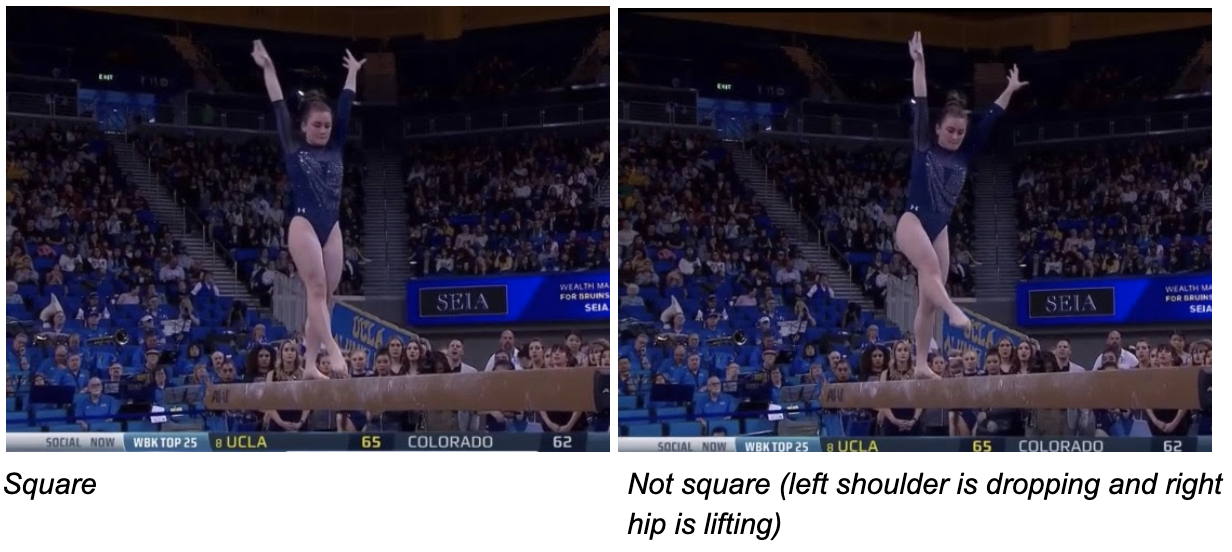
Try it at home. Stand with one foot in front of the other as if you were on a balance beam. Now tilt one shoulder down slightly—and then a little bit more. See how easy it is to lose your balance and take a step sideways?
One technique that gymnasts use to maintain a square body position on beam is to keep both arms in perfect synchronicity while performing skills. If the right arm is mirroring the left, then the shoulders are moving on the same plane and thus decreasing the chance of wobbles.
The top beam workers in the country have mastered this technique on each of their skills. Take a look for yourself:
1. Lexy Ramler (Minnesota, 9.983 avg.)
Back handspring layout step-out
Front aerial to wolf jump
Beat jump to ring jump
2. Rachel Gowey (Florida, 9.942 avg.)
Back handspring double layout step-out
Front aerial to sissone
Switch leap to split jump (she actually uses a cross arm technique on her switch leap, which is a common teaching)
3. Kyla Ross (UCLA, 9.933 avg.)
Back handspring layout step-out
Front aerial to beat jump
Switch ring to beat jump
The gymnasts above are all consistent and even with their arm placement, making it much easier for them to complete a routine without wobbles and score higher than other athletes.
The arms are of course one small piece of the balance beam puzzle, which also includes things like rotation, amplitude and overall confidence. But control over arm placement is still a good way to increase the likelihood of success on any given skill.
Here are some examples of poor arm placement that contributed to significant wobbles:
Florida’s Amelia Hundley’s right arm on her layout step-out is outstretched slightly by her side while her left arm remains a lot closer, almost crossing her body in the air. This alignment issue causes her left shoulder to drop and her right hip and shoulder to rise upon landing, which results in a large balance check.
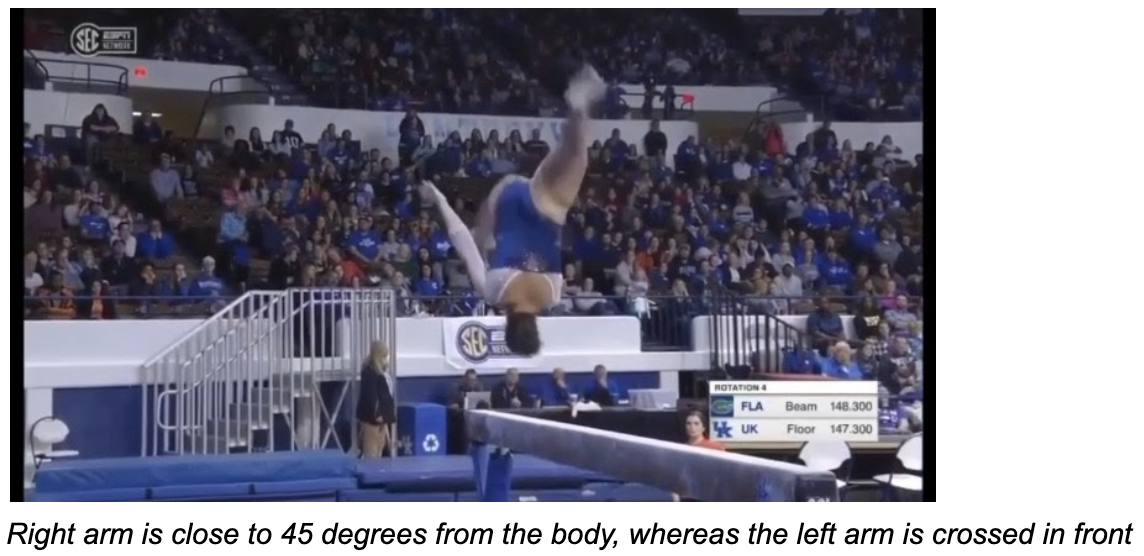
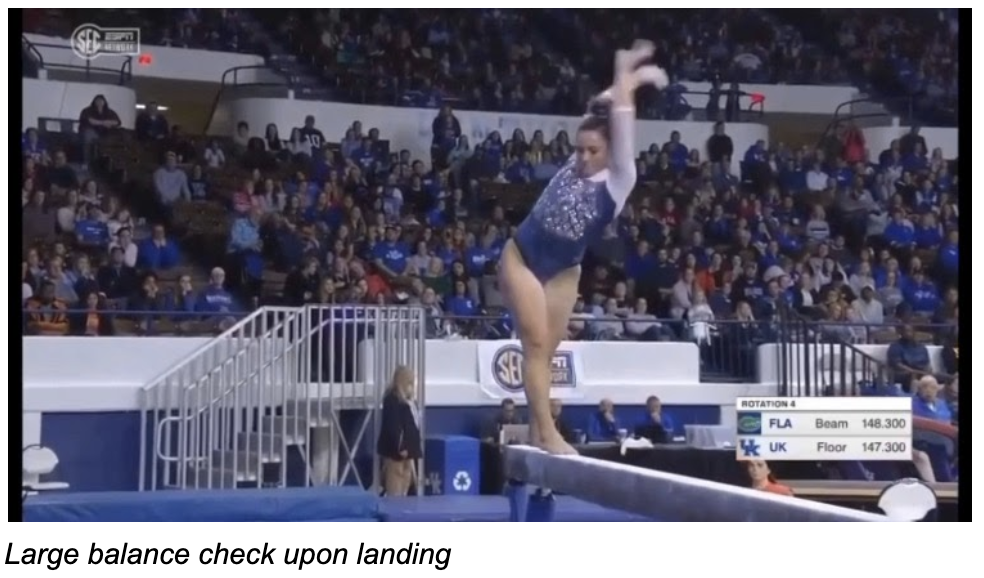
Arm placement is also really important on leaps and jumps. With most of these elements, the legs are already naturally balanced (splits, straddles), which leaves the arms as sort of a deciding factor for whether or not the skill will land properly.
There are a few different schools of thought when it comes to where the arms should be during a switch leap. Some coaches teach that a gymnast’s arms should both begin outstretched in front of the body and then open to side. Others teach a cross technique (as mentioned above with Gowey), where the arm opposite of the leg is outstretched in front and the other one is out to the side.
Whichever position a gymnast chooses, the most important part is that it’s done purposefully and consistently. A hybrid between the two or sometimes one and sometimes the other leads to inconsistency and a likeliness to fall or wobble on the skill.
Oklahoma’s Carly Woodard goes for some hybrid of cross and arms directly up, but when she comes back down to the beam she circles her right arm backwards while her left arm is outstretched to the side. Her right arm does a lot more work than her left one, which remains much more stable. By hitting multiple positions with both arms (and especially her right), she creates more energy and body movement than necessary, and it ultimately throws her off balance.
Another common NCAA skill that requires an extremely square body is the front aerial. The most common technique requires the arms to complete a full 360-degree circle forwards from the beginning of the skill to the end of it.
The best front aerials (think Norah Flatley) are done with the arms in perfect mirror image of each other. However, if one arm is slower than the other during the full rotation, there’s a good chance the skill will be off-balance.
Here, Oklahoma’s Anastasia Webb’s left arm is just a tad bit slower than her right. Upon landing, she tries to correct this by speeding up her left arm, but it creates more imbalance and her right shoulder drops down, causing her to wobble.
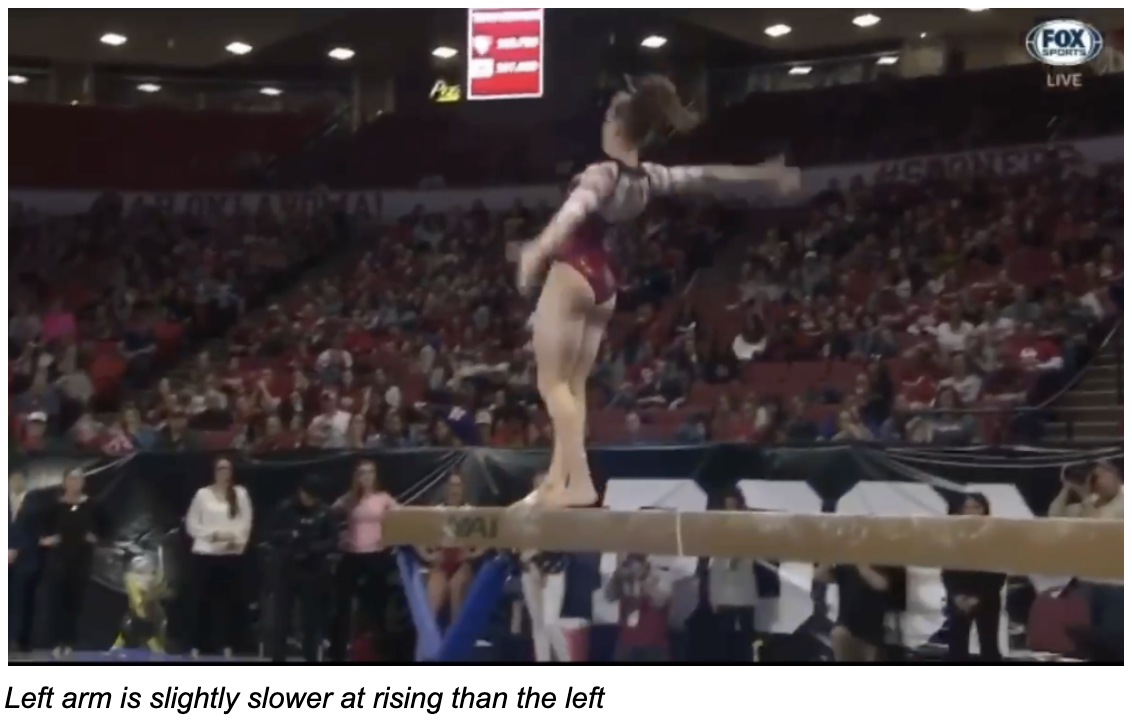
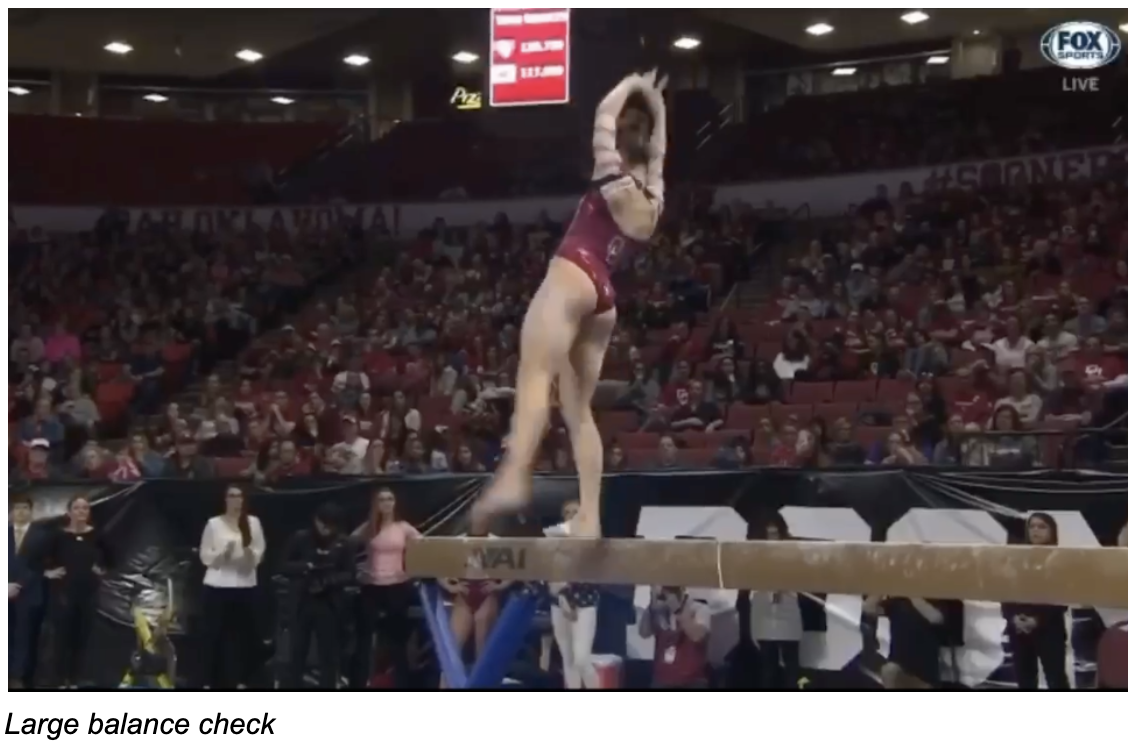
All it takes sometimes is a small change or irregularity in a skill to throw it off balance since the beam’s narrow width allows little room for error. Next time you watch a college competition, pay attention to arm positioning on this event, and let me know what you see!
Article by Katie Norris
Like what you see? Consider donating to support our efforts throughout the year! [wpedon id=”13158″]

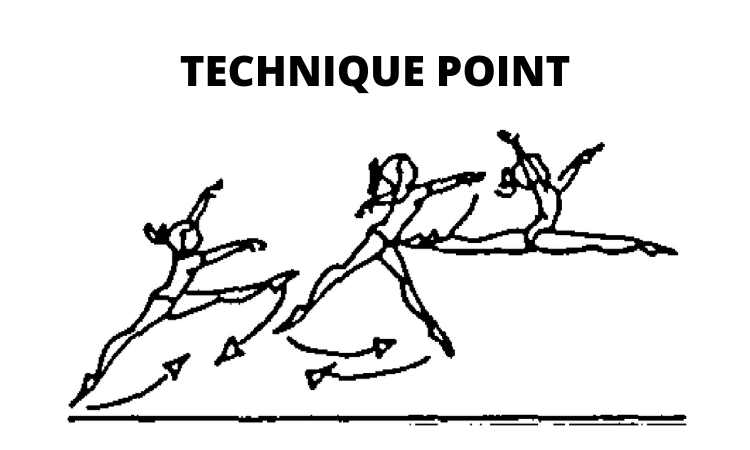













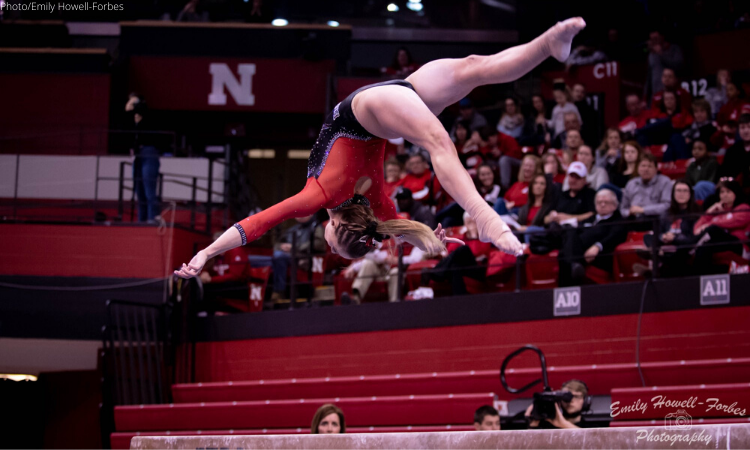
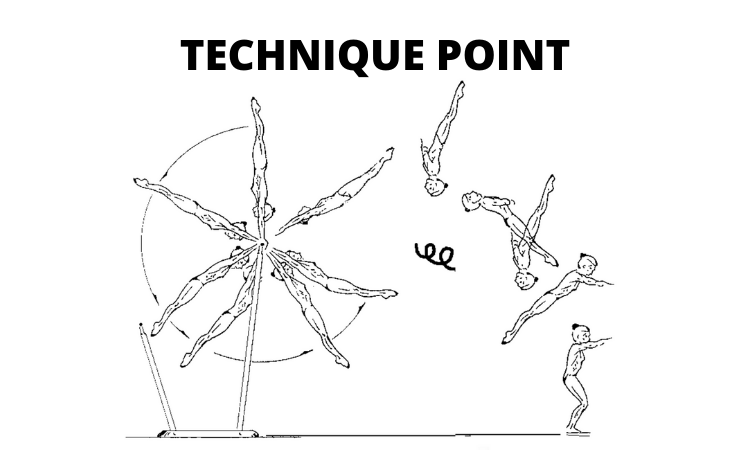
One comment